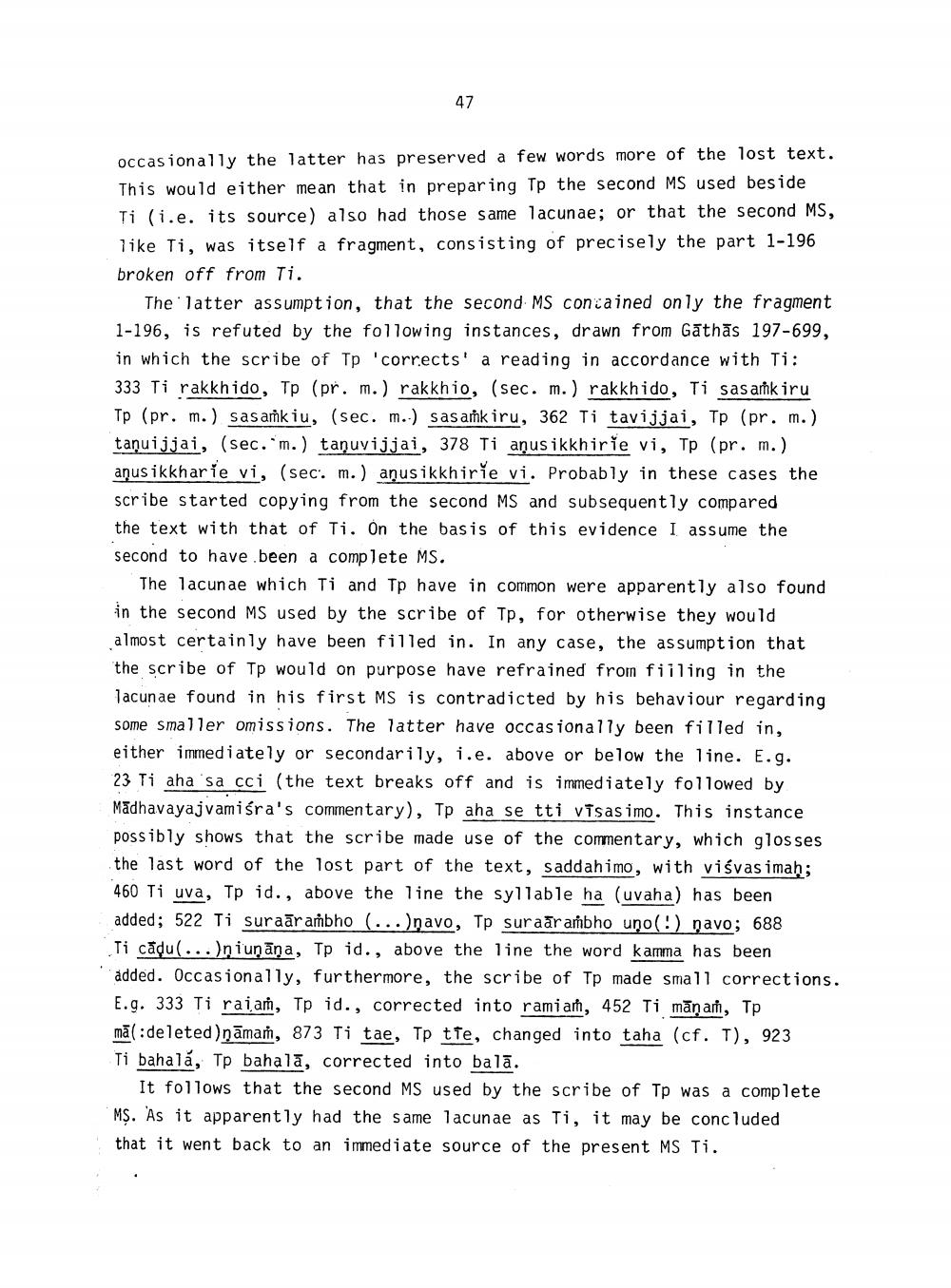________________
47
occasionally the latter has preserved a few words more of the lost text. This would either mean that in preparing Tp the second MS used beside Ti (i.e. its source) also had those same lacunae; or that the second MS, like Ti, was itself a fragment, consisting of precisely the part 1-196 broken off from Ti.
The latter assumption, that the second MS con cained only the fragment 1-196, is refuted by the following instances, drawn from Gathās 197-699, in which the scribe of Tp 'corrects' a reading in accordance with Ti: 333 Ti rakkhido, Tp (pr. m.) rakkhio, (sec. m.) rakkhido, Ti sas arkiru Tp (pr. m.) sasaṁkiu, (sec. m.-) sasank iru, 362 Ti tavijjai, Tp (pr. m.) taņuijjai, (sec. m.) tanuvijjai, 378 Ti aņusikkhirie vi, Tp (pr. m.) aņus ikkharie vi, (sec. m.) aņusikkhirie vi. Probably in these cases the scribe started copying from the second MS and subsequently compared the text with that of Ti. On the basis of this evidence I assume the second to have been a complete MS.
The lacunae which Ti and Tp have in common were apparently also found in the second MS used by the scribe of Tp, for otherwise they would almost certainly have been filled in. In any case, the assumption that the scribe of Tp would on purpose have refrained from fiiling in the lacunae found in his first MS is contradicted by his behaviour regarding some smaller omissions. The latter have occasionally been filled in, either immediately or secondarily, i.e. above or below the line. E.g. 23 Ti aha sa cci (the text breaks off and is immediately followed by Mādhavayajvamiśra's commentary), Tp aha se tti visas imo. This instance possibly shows that the scribe made use of the commentary, which glosses the last word of the lost part of the text, saddahimo, with viśvas imaḥ; 460 Ti uva, Tp id., above the line the syllable ha (uvaha) has been added; 522 Ti suraārambho (...)ņavo, Tp suraārambho uno(!) navo; 688 Ti cadu(...)niunāna, Tp id., above the line the word kamma has been added. Occasionally, furthermore, the scribe of Tp made small corrections. E.g. 333 Ti raian, Tp id., corrected into ramiah, 452 Ti mānan, Tp māl: deleted)nāmaḥ, 873 Ti tae, Tp tte, changed into taha (cf. T), 923 Ti bahala, Tp bahala, corrected into balā.
It follows that the second MS used by the scribe of Tp was a complete M$. As it apparently had the same lacunae as Ti, it may be concluded that it went back to an immediate source of the present MS Ti.




